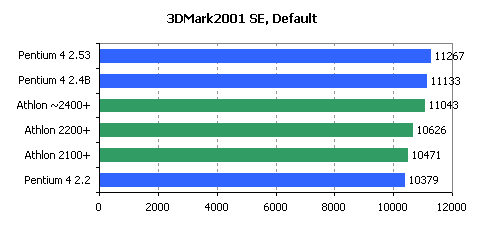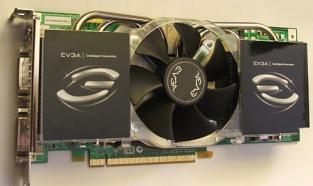AMD ATHLON XP 2200+ ON 0.13-MICRON THOROUGHBRED CORE
![]()
|
|
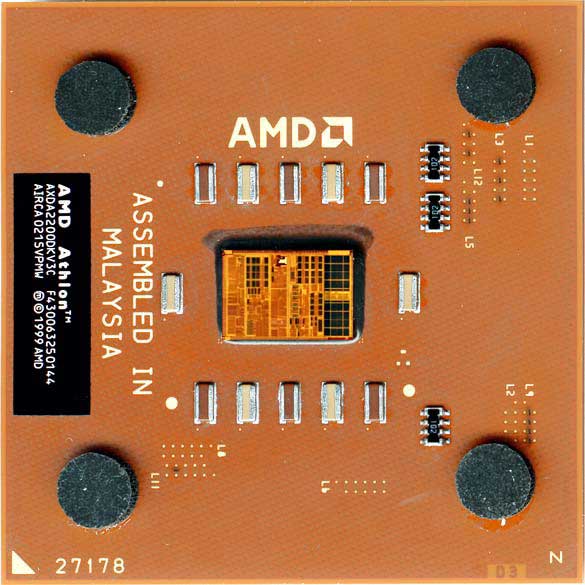 |
||||||||||||
| Posted:2002-06-10 By Asboulougia Number of View:5823 |
|||||||||||||
By :Asboulougia Posted:2002-06-10
We reviewed the first AMD processor on the new 0.13micron Thoroughbred core - AThlon Xp2200+ working at 1.8GHz core frequency. In our article you will learn about the differences betweenThoroughbred and Palomino cores, thermal specifications of the newcomer and its overclocking potential Table of contents:
After about a year since the Intel Company started mass manufacturing of x86 processors using the 0.13-micron technology, the long-time Intel\'s rival, AMD, also finished the transition to the new technology. It should be mentioned that AMD managed to compete quite successfully with Intel without the most advanced technology for a long time. The progressive K7 architecture used in the Palomino based processors allowed Athlon XP to perform as fast as high-end Pentium 4 CPUs that work at higher clock-rates. But recently the situation has greatly changed. The Pentium 4 working frequencies have sprung up and AMD has been left in a kind of dead end with its 0.18-micron technology limiting the working frequencies of Palomino based processors to 1.73GHThat\'s exactly how the things were by the beginning of the summer when after numerous delays AMD could at last launch its first desktop CPUs on the new Thoroughbred core made with 0.13micron manufacturing technology. Everything mentioned above is exactly the reason why AMD fans pin great hopes on the new core. Thoroughbred, although it differs slightly from its predecessor in the architecture, can allow to continue raising the clock frequencies of the Athlon XP family thus giving the opportunity for high-performing AMD processors to catch up with their Intel\'s competitors. So I\'ve got the first Thoroughbred processor that works at 1.8GHz clock frequency, that is, only 66MHz higher than the top-end Palomino model. But this CPU is interesting not only for its clock-rate but for its new core, made with the more advanced technology. That\'s why I will talk not so much about the new Athlon XP performance, but mostly about some other quite important things. They are:
What is Thoroughbred? First of all let\'s point out the differences between the new Thoroughbred core and its predecessor, the Palomino core, used in the Athlon XP processor family. In brief, the main difference between the two cores is the technological process used for their manufacturing. In more words, we should mention that the transition to the 0.13-micron process for Thoroughbred production allows AMD to kill a few birds with one stone. The "birds" are mostly of a technological nature. As the perfection of the technological process leads to a smaller processor die size it also means that they will be able to produce more dies of a single wafer. According to AMD, a wafer 200mm in diameter (that\'s exactly the wafers used at Fab30 in We shouldn\'t also miss out the fact that the change of the technological process will allow raising Athlon XP working frequencies higher up. As it has been already said, the 1.73GHz frequency is virtually the limit for the 0.18-micron Palomino core. The move from the Palomino core to Thoroughbred is going to offer AMD the possibility of speeding up its high-performance CPU family. For example, preliminary estimates suggest that Thoroughbred based Athlon XP processors will at least reach the 2GHz bar by the end of the year. By this time, AMD is also planning to replace the Palomino core with Thoroughbred in the low-end Athlon XP models with ratings of 1700+ and higher, though. It wouldn\'t be correct to consider the Thoroughbred core as a remake of Palomino with some new norms imposed by the finer manufacturing technology. Thoroughbred considerably differs from Palomino in its inner structure; the following snapshots bear the evidence: The fact that we don\'t see any architectural innovations by Thoroughbred as compared with Palomino is quite easy to explain. Right now AMD is focusing on polishing up its 8th-generation Hammer processor, which is to be launched at the beginning of 2003. So, AMD has neither desire nor available resources to work on improvements in the old K7 architecture. The further development of Athlon XP is going to be as usual - by simply increasing the core clock frequency. One change in Athlon XP will happen, though. The next core, code-named Barton, which is to be used in the processors of this family up to its end, will have a larger L2 cache - 512 KB. By the way, that\'ll be the only difference between Barton and Thoroughbred. AMD decided to make this change to its new product because the 0.13-micron core required certain redesign, so that its production could be moved to UMC\'s fabs. As there\'s about half a year before Barton appears in the market, let\'s return to the hero of our story, the Thoroughbred core. To sum up everything mentioned above, we can only state that there\'re really few points of difference between Thoroughbred and Palomino. As for the "outer manifestations" of the new core, that is, the features which allow distinguishing between the processors on Palomino and Thoroughbred cores, we should mention the following:
thing required from mainboards to support new Athlon XPs is an updated BIOS version that can "recognize" the new processors. Nevertheless, there have been claims from users that some mainboards do not support Thoroughbred yet. So when buying the new CPU don\'t forget to check the platform maker\'s web-site to make sure that your specific mainboard does support Thoroughbred based processors (check the mainboard revision first). Is Athlon XP As "Hot" As We Think? One more advantage of the shift to finer manufacturing technology is lower heat dissipation. The new Athlon XP on the Thoroughbred core is no exception. As the new processors use lower core voltage they do produce less heat. Here are the official AMD data on heat dissipation of Athlon XP processors built on Thoroughbred and Palomino cores Yes, the typical Athlon XP processor does dissipate a little more heat than Pentium 4. But there\'s nothing to be so worried about. The situation isn\'t so dramatic as most users think. In my opinion, no one would ever notice the allegedly awful heat dissipation of Athlon XP if it were not for three facts. These facts, acquiring with the time numerous details and exaggerations, push most users to consider Athlon XP an extremely warm CPU. So, here are the real facts:
Once facing these facts, the unsophisticated reader would instantly infer that the Athlon XP\'s temperature is too high, even dangerous for the CPU. But the facts need a few comments making clear the point of the matter. On the whole, the comparison to Pentium 4 is not correct as the operation mechanisms, thermal conditions and monitoring of the Intel\'s processor differ greatly from the functions implemented in Athlon XP. So, let\'s try to work it out. As for the necessity of using copper base coolers with Athlon XP processors on Thoroughbred core, it\'s quite simple to explain: the Thoroughbred core is very small, i.e. the surface dissipating heat is small. That is why the density of the heat stream to be taken off the Thoroughbred processor is rather high and the dissipated heat should get quickly spread upon the heatsink footing to avoid local hot-spotting. That\'s why the footing should be made of a material with high thermal conductivity. As for Pentium 4, this processor is equipped with IHS (Integrated Heat Spreader) that plays the same role as the copper cooler base in Athlon XP. In Pentium 4 the heat produced by the core first spreads along the IHS, which is a 2-millimeter copper plate with nickel overcoat, and then is taken to the main heatsink through the large surface of the heat-spreader. As a result, the cooler for Pentium 4 can be made of aluminum as well, as IHS actually none other but the copper cooler footing integrated directly into the processor. The use of IHS in Pentium 4 has its shortcomings, though. As the IHS is in contact with the cooler, the temperature lag of the Pentium 4 cooling system is a little bit higher than it could be if the heatsink were in direct contact with the core. Anyway, IHS helped Intel to solve quite successfully the problem of the processor core hot-spotting. Unfortunately, AMD has not come to use IHS in Thoroughbred based processors. CPUs on Barton core won\'t have IHS either. But all 8-generation AMD processors, which are going to be rolled out in the end of 2002 - beginning of 2003, will be equipped with a heat-spreader. As for burnt Athlon XPs, we cannot deny these sad facts, unfortunately. These CPUs do sometimes fail due to overheating while the rivalry Pentium 4 family is equipped with special heat-protection that stops the processor when the critical temperature level is exceeded. Athlon XP has no protection like that, so, if the user does something wrong when installing the cooler or uses low-quality or not very tight sitting cooling systems, the processors on Palomino core as well as on Thoroughbred may just burn up. It\'s not fair to claim that AMD didn\'t care to protect its CPUs from overheating. The company just wanted the mainboard to bear part of the responsibility for overheating and, as we see, miscalculated greatly. AMD equipped its Palomino and Thoroughbred based processors with a built-in thermal diode. The data taken by this diode was originally supposed to be then processed by the mainboard. So, AMD was left to the mercy of mainboard makers, who didn\'t prove eager to support the new initiative. The implementation of thermal control on the mainboard requires additional costs. Although the costs are not so big (the required chips cost less than $1), no one appeared willing to pay them. So, nowadays there are very few mainboards in the market that have a correct heat-control system. Anyway, there\'s still some hope that the situation will improve: AMD decided to force mainboard makers to support heat-protection and won\'t certify products that don\'t have it. It\'d be fair to mention that 8th generation processors, unlike their predecessors, will have a built-in protection against core overheating, the same as by Pentium 4. Now let\'s talk about the higher working temperature of Athlon XP. However paradoxical it may seem it\'s mainboard makers again, and not the processors, that are to blame here. The point is that when processing the HALT command, which means processor\'s stopping as there\'re no instructions to run, the CPU usually switches to the "waiting" mode (Halt and Stop Grant). The processors of the Pentium 4 family automatically turn into the power saving mode. In case of Athlon XP it\'s necessary to disconnect from the system bus (Bus Disconnect) if you want to switch to the power saving mode, which is supposed to be done via the chipset and mainboard BIOS. Unfortunately, the same mishap happened to the system bus disconnect task, just like in case of thermal diode. As practice shows, BIOSes of nearly all mainboards is configured in such a way that Athlon XP never switches to the power saving mode. So, while Pentium 4 processors are at rest, Athlon XPs go on working. Considered that computers usually stay idle in office tasks waiting about 95% of the time for the data to be processed, it\'s natural that in normal conditions Athlon XP is warmer than Pentium 4. Right now, I can only think of one mainboard maker that implemented the possibility to switch Athlon to power saving mode in the BIOS. It is Fujitsu-Siemens, which mainboards are hard to find in the market. Performance Office Applications and Data Encoding 3D Performance Conclusion It\'s time to sum it all up. The transition to the 0.13micron technology, undertaken by AMD, didn\'t bring in anything new. Thoroughbred core proved to be similar to Palomino, with all the highs and lows of the latter. As a result, we shouldn\'t expect too much from the new Athlon XP. AMD has now got the opportunity to raise slowly the core clock frequencies of its processors for another while, which will be going on for about the next half a year. Then Thoroughbred will be replaced with Barton, boasting a larger L2 cache, and 8th generation ClawHammer architecture. Meanwhile, although new Thoroughbred based Athlon XP processors produce less heat and can potentially work at higher frequencies, their overclockability might be better. So, there\'s no reason to buy an Athlon XP on Thoroughbred core if you are pursuing overclocking goals. By launching 0.13micron CPU into mass production, AMD proved once again that there shouldn\'t be any problems with the production of the budding hit - Hammer. Moreover, the use of more advanced technology for the production of Athlon XP family will automatically leaf to the reduction of the production costs, and thus to lower prices for AMD processors, which will definitely make them more attractive to the users. As for performance, we can only state that AMD has fallen behind Intel and can\'t now offer processors performing close enough to Pentium 4 2.53GHz. New Athlon XP 2200+ in most cases works just a little bit faster than Pentium 4 2.2GHz. Moreover, as the SSE2 instructions set is getting popular, Pentium 4 processors show even better results. If we add to that the recent transition of Pentium 4 processor family to 533MHz bus, which also contributed in a way to its performance, then it\'s quite possible that Athlon XP rated adequately to the Intel processors core clock will be lagging behind them in a lot of applications.
we would be happy to answer for your question . if you have suggestion or comment
regarding this review our support would be glad to help just join our forum and ask u will get the best answer
to discuss check our forum section :-) RATE THIS REVIEW | |||||||||||||
![]()

AMD Athlon XP 2200+ on 0.13-Micron Thoroughbred Core
AMD Athlon XP 2200+ on 0.13-Micron Thoroughbred Core


7600gt review
7600gt is the middle card range.
We already benchmarked this video card and found that ...

 geforce 8800gtx and 8800gts
geforce 8800gtx and 8800gts  Xtreview software download Section
Xtreview software download Section  AMD TURION 64 X2 REVIEW
AMD TURION 64 X2 REVIEW  INTEL PENTIUM D 920 , INTEL PENTIUM D 930
INTEL PENTIUM D 920 , INTEL PENTIUM D 930  6800XT REVIEW
6800XT REVIEW  computer hardware REVIEW
computer hardware REVIEW  INTEL CONROE CORE DUO 2 REVIEW VS AMD AM2
INTEL CONROE CORE DUO 2 REVIEW VS AMD AM2  INTEL PENTIUM D 805 INTEL D805
INTEL PENTIUM D 805 INTEL D805  Free desktop wallpaper
Free desktop wallpaper  online fighting game
online fighting game  Xtreview price comparison center
Xtreview price comparison center 

- The new version of GPU-Z finally kills the belief in the miracle of Vega transformation
- The motherboard manufacturer confirms the characteristics of the processors Coffee Lake
- We are looking for copper coolers on NVIDIA Volta computing accelerators
- Unofficially about Intels plans to release 300-series chipset
- The Japanese representation of AMD offered monetary compensation to the first buyers of Ryzen Threadripper
- This year will not be released more than 45 million motherboards
- TSMC denies the presentation of charges from the antimonopoly authorities
- Radeon RX Vega 64 at frequencies 1802-1000 MHz updated the record GPUPI 1B
- AMD itself would like to believe that mobile processors Ryzen have already been released
- AMD Vega 20 will find application in accelerating computations
- Pre-orders for new iPhone start next week
- Radeon RX Vega 57, 58 and 59: the wonders of transformation
- ASML starts commercial delivery of EUV-scanners
- The older Skylake processors with a free multiplier are removed from production
- Meizu will release Android-smartphone based on Helio P40
- AMD Bristol Ridge processors are also available in American retail
- The fate of Toshiba Memory can be solved to the next environment
- duo GeForce GTX 1080 Ti in GPUPI 1B at frequencies of 2480-10320 MHz
- New Kentsfield overclocking record up to 5204 MHz
- Lenovo released Android-smartphone K8



computer news computer parts review Old Forum Downloads New Forum Login Join Articles terms Hardware blog Sitemap Get Freebies
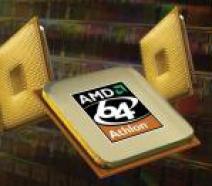

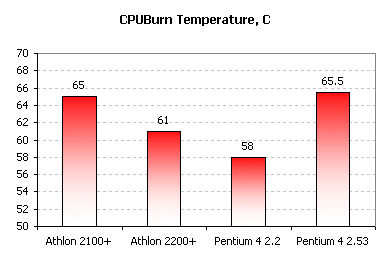
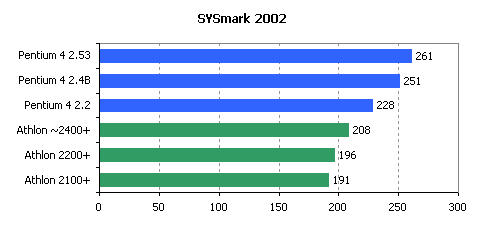

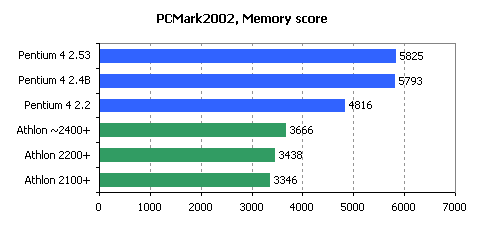
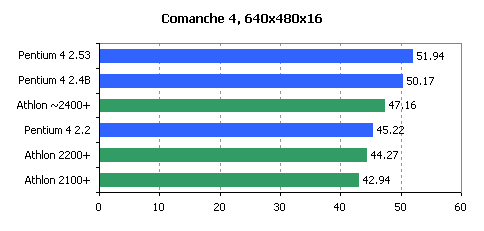 br
br